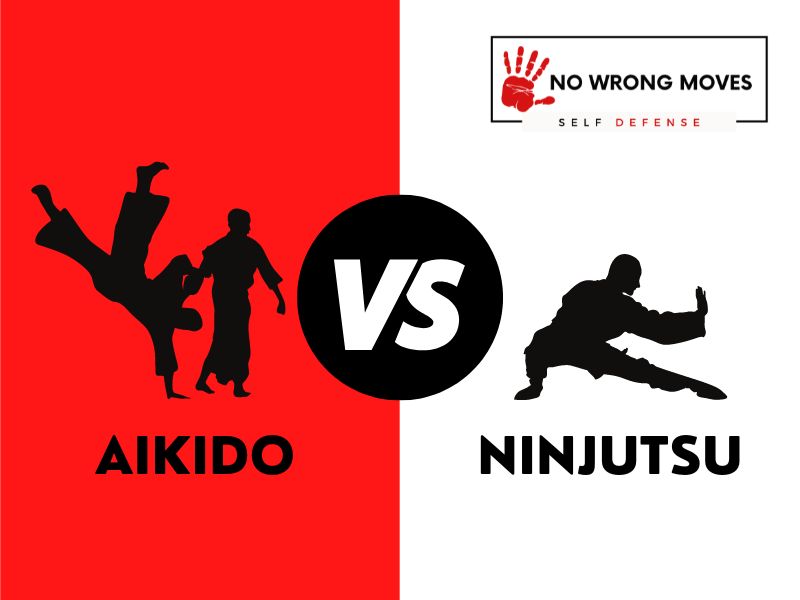
- What We Know About Aikido
- What We Know About Ninjutsu
- Key Elements Of Aikido
- Key Elements Of Ninjutsu
- Aikido Rankings & Levels
- Ninjutsu Rankings & Levels
- Aikido Vs. Ninjutsu Attire
- What A Typical Aikido Training Session Looks Like
- What A Typical Ninjutsu Training Session Looks Like
- Aikido Movies
- Conclusion: Aikido Vs. Ninjutsu
Many people in the martial arts community debate whether Aikido or Ninjutsu is the better practice. While both offer unique benefits and principles, there are some key differences that set them apart.
The main difference between Aikido and Ninjutsu lies in their origins and intentions. Aikido was developed in Japan by Morihei Ueshiba as a nonviolent means of self-defense, utilizing joint locks and throws to subdue an attacker without causing harm.
Ninjutsu, on the other hand, originated as a set of tactics and strategies used by Japanese feudal warriors (known as ninjas) for espionage and combat.
Another key difference is the focus on weapons training. Aikido practitioners primarily train empty-handed, using an attacker’s momentum against them in defense.
Ninjutsu, however, places a heavy emphasis on weapon usage such as swords, staffs, and shuriken.
While both martial arts involve some level of physical fitness and discipline, Aikido focuses on harmony and developing the spirit, while Ninjutsu is more concerned with practical self-defense in real-life situations.
Those are the main differences between Aikido and Ninjutsu, but if you want to learn more, I've broken down their ranking systems, benefits and even top movies featuring each art below!
What We Know About Aikido
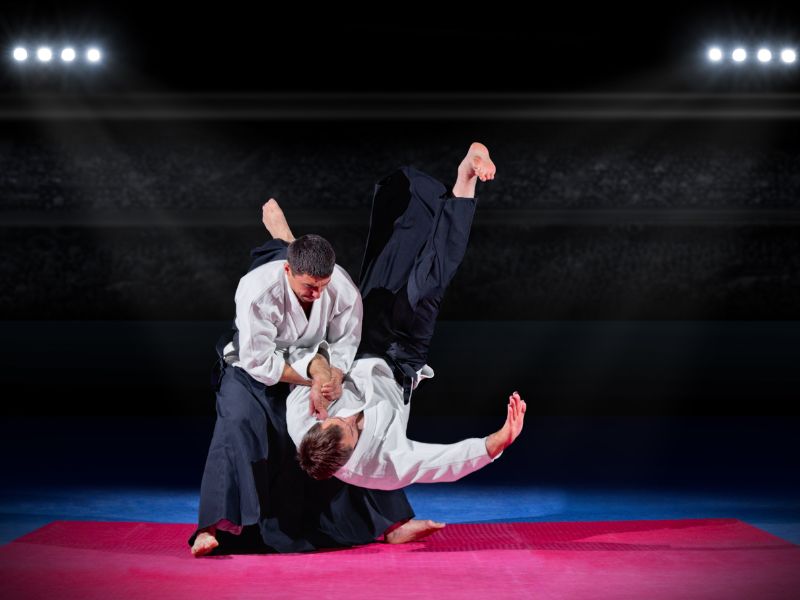
Aikido is a modern martial art that was created in the early 20th century by Morihei Ueshiba. It is based on the principles of budo, which follows the code of ethics of bushido.
Bushido is the code of ethics that samurai follow and teaches justice, courage, benevolence, politeness, honesty, honor, and loyalty.
Aikido is a combination of aikijujitsu, which is a martial art that uses both unarmed and armed fighting techniques, and iai-jutsu, which is a martial art that uses swordsmanship.
Aikido employs unarmed techniques, such as strikes, joint locks, and throws to subdue an opponent. It also makes use of weapons such as knives, swords, and sticks to defend against an attacker.
Aikido practitioners believe that one should only use the amount of force necessary to achieve their goals.
They also believe in using an opponent's momentum against them in order to control them rather than harm them.
Aikido is a challenging but rewarding martial art to study. It requires hefty discipline and dedication to master its techniques.
Thankfully though, the rewards are great for those who persevere, especially since Aikido can provide its practitioners with a sense of confidence and inner peace. It can also teach them how to better defend themselves and others in dangerous situations.
What We Know About Ninjutsu
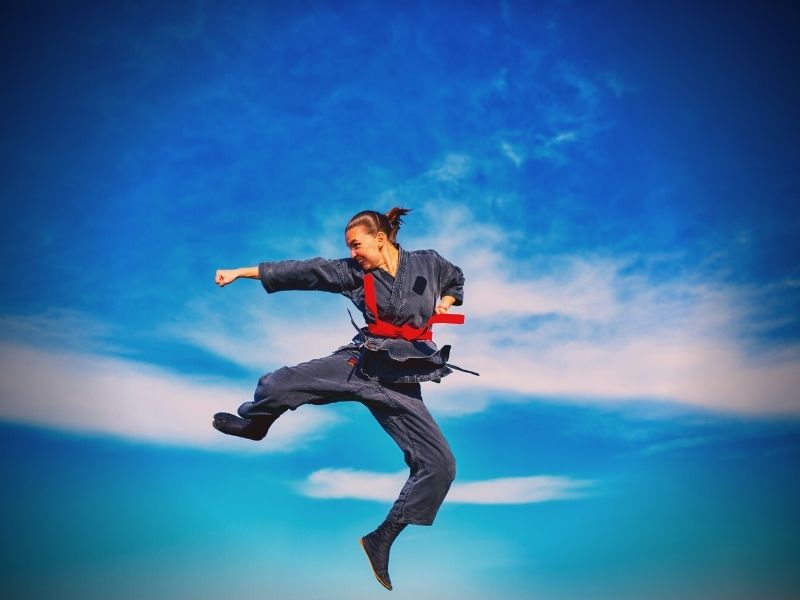
Ninjutsu is a martial art that originated in Japan. It is known for its stealthy techniques and use of unorthodox weapons. Ninja were traditionally associated with espionage and assassination, but today ninjutsu is practiced as a form of self-defense and exercise.
Ninjutsu training typically includes activities such as juggling, jumping, running, and rolling. Students also learn to use various props such as sticks, swords, and nunchaku. In addition to physical conditioning, ninjutsu also requires mental discipline and focus.
Students must be able to control their breath and stay calm under pressure. Ninjutsu is a demanding art, but it can be extremely rewarding for those who are willing to put in the effort.
Of course, this is only a brief history and understanding of Aikido and Ninjutsu, but if you want to go deeper into either art, be sure to check out the following posts:
Now, back to the comparison...
Let's look at the origins of the respective disciplines and then compare the key elements of their practices. You will be able to understand some of their similarities and differences a bit better afterward.
| Aikido | Ninjutsu | |
| Origins | Japanese | Japanese |
Key Elements Of Aikido
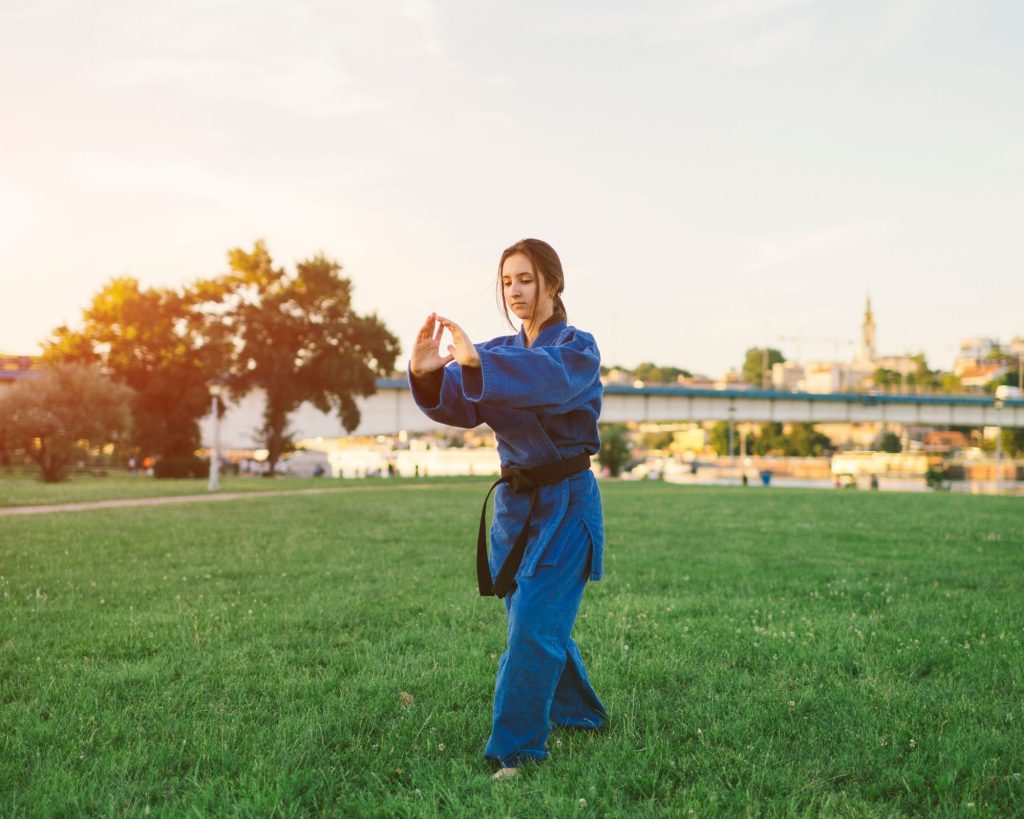
Aikido is a Japanese martial art that focuses on the proper stance and balance of the practitioner. Proper stance and balance are critical components of Aikido, as they provide the foundation for all other techniques.
A stable and balanced stance allows the practitioner to move fluidly and with control, making it easier to perform techniques effectively.
In Aikido, practitioners learn to redirect their opponent's energy rather than using force against them. Redirecting energy is one of the fundamental aspects of Aikido, and it's difficult to separate this idea from the sport itself.
Through properly redirecting an opponent's energy, Aikido practitioners can use their opponent's momentum against them, rather than relying on their own strength.
Apart from physical techniques, Aikido also emphasizes controlling one's emotions. Practitioners learn to remain calm and focused, even in stressful situations.
Aikido also places a strong emphasis on non-violent conflict resolution. The first option in any situation is to find a peaceful resolution, rather than resorting to violence.
Remember that in Aikido, the first option is not violence, and it reflects the overall philosophy of Aikido as a martial art focused on peace and harmony.
Key Elements Of Ninjutsu
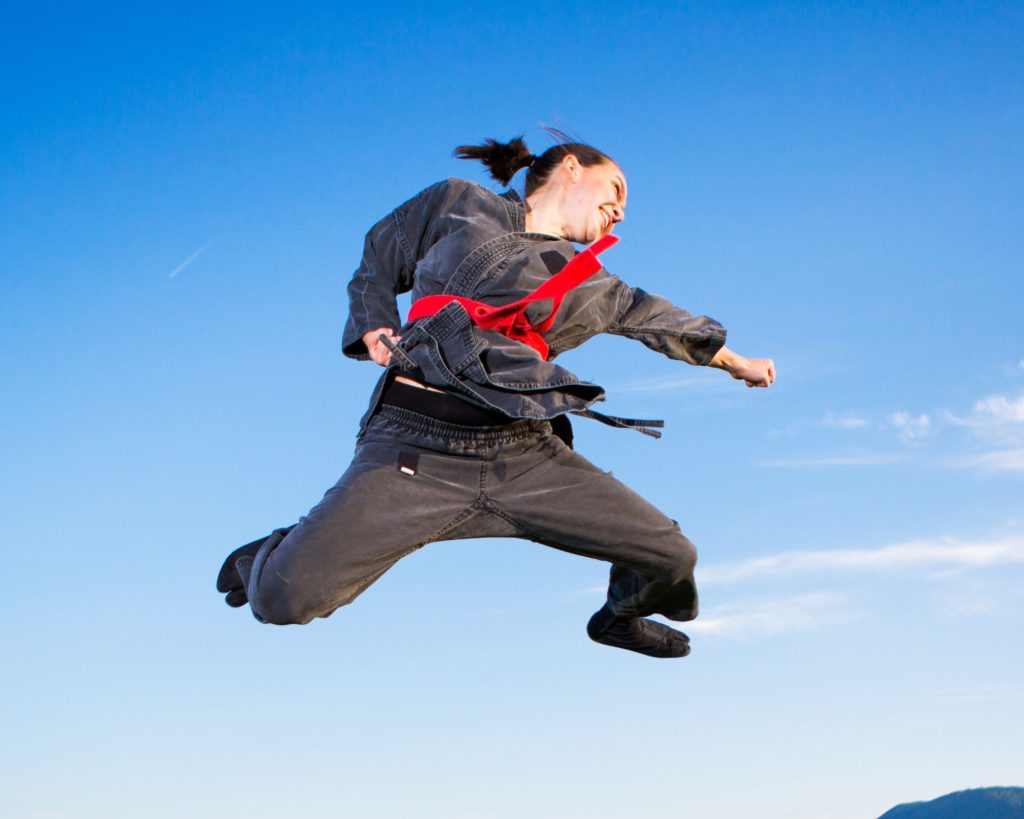
Ninjutsu is a comprehensive system of martial arts that teaches methods of unarmed combat, weapon use, espionage, and sabotage.
It employs a wide variety of weapons and tactics, making use of whatever is available in order to achieve the desired outcome.
Ninjutsu is known for its quick and agile movements, as well as its effective use of evasion and distraction techniques. It relies heavily on mind-body coordination and discipline, requiring practitioners to be both physically and mentally agile.
5. Ninjutsu training can be quite rigorous, and requires a high level of dedication and commitment.
Ninjutsu also teaches mental discipline and focus, as well as the use of various secret weapons and tools. These elements are important because they allow practitioners to effectively defend themselves against physical attacks while also remaining hidden and undetected.
Another thing I think is important to look at is the different rankings and levels in each art. if you are looking to take up either Aikido or Ninjutsu, whether as a hobbyist or to compete, you need to understand the different levels of proficiency and what is required for testing and ranking.
Aikido Rankings & Levels

Aikido is a discipline that has many different levels, each represented by a different colored belt. The first level is white belt, which is for beginner students. Once you have mastered the basics of Aikido, you can move on to the blue belt, which is for intermediate students.
And finally, once you have mastered the art of Aikido, you can become a black belt, which is the highest level.
There are three degrees as a black belt holder: 1st dan, 2nd dan, and 3rd dan black belt. In order to achieve each of these degrees, you must pass a test that proves your mastery of Aikido.
There are also other ranks and colors that exist outside of the traditional ranking system. In some Western Aikido schools, there are more ranks added in between 1st dan and 2nd dan.
These ranks can be any combination of colors, and it allows for students to be promoted at a more gradual pace and helps to distinguish between students of different ranks.
Ninjutsu Rankings & Levels

The Ninjutsu Kyu Rank System is a ranking system used in the martial art of Ninjutsu. The system has nine ranks, with each rank corresponding to a level of ability. The ranks are as follows:
The Kyu 1 rank is the entry-level rank, and indicates that the practitioner has a basic understanding of the art of ninjutsu.
The Kyu 2 rank indicates that the practitioner has a more advanced understanding of the art, and can begin to learn more complex techniques.
The Kyu 3 rank is the beginning of the intermediate level, and indicates that the practitioner has mastered some basic techniques and is able to start learning more complex ones.
The Kyu 4 rank is an advanced level, and indicates that the practitioner has mastered many basic techniques and is able to apply them in combat.
The Kyu 5 rank is an even more advanced level, and indicates that the practitioner has mastered all basic techniques and is able to apply them in any situation.
The Kyu 6 rank is the beginning of the expert level, and indicates that the practitioner has reached a high level of mastery over ninjutsu.
The Kyu 7 rank is an even higher level, and indicates that the practitioner has mastered all techniques and is able to use them in any situation.
The Kyu 8 rank is the highest rank in the system, and indicates that the practitioner has reached an unsurpassed level of mastery over ninjutsus techniques and strategies.
The Kyu 9 rank is a special rank, only given to ninjutsu masters who have trained for many years and achieved a level of mastery beyond the Kyu 8 rank.
The ranking system is used as a way to track a practitioner's progress and ability in the art of ninjutsu.
Aikido Vs. Ninjutsu Attire
This section simply compares the clothing and uniforms that practitioners wear in combat.
Aikido Attire:
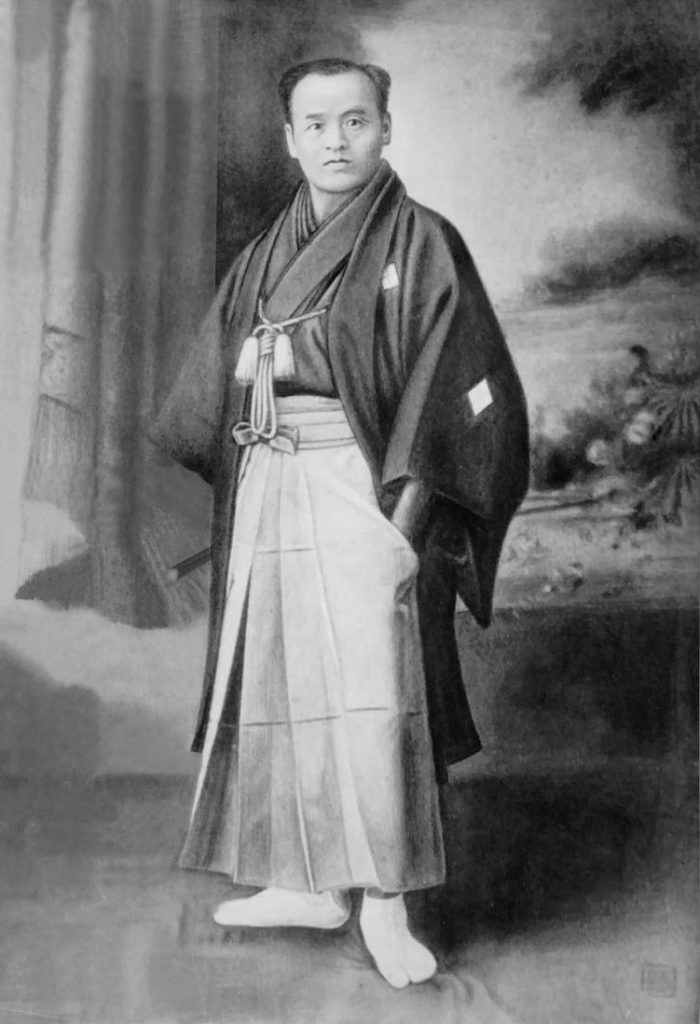
Most aikido practitioners wear a white dogi, or “uniform.” The dogi is a loose-fitting cotton kimono with a belt. In some schools, aikido students also wear hakama, which are pleated trousers that are tied at the waist and fall below the knee.
Male practitioners often don white tabi (socks), while female practitioners often wear white zori (wooden sandals). Some people also choose to practice without any clothes on in order to better feel their body and movements, but this isn't all too common.
Ninjutsu Attire:
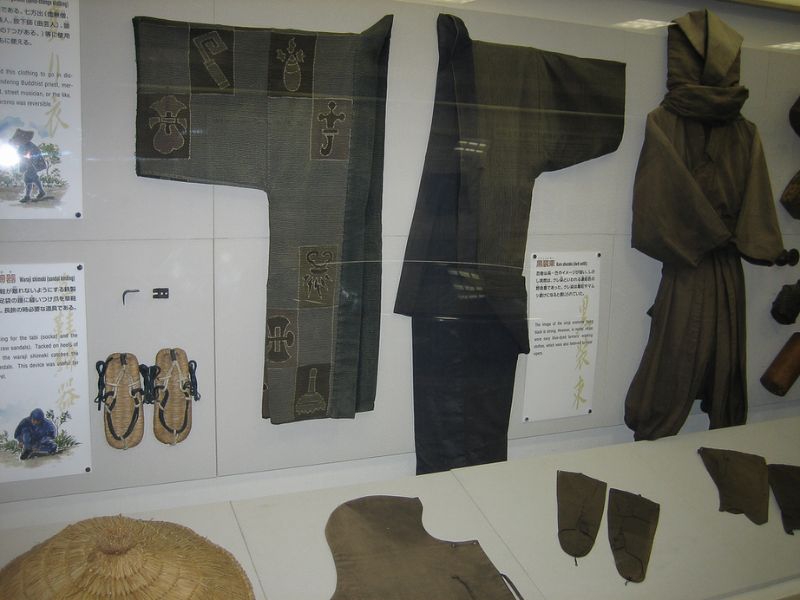
One aspect of traditional Japanese ninjutsu is the attire worn by practitioners during training and infiltration missions.
The most commonly recognized piece of ninjutsu attire is the black uniform, or shikaku-gi, which helps ninja blend into the night and hide in shadows. In addition to the uniform, ninja also wear tabi socks with split toes for improved agility and stealth, as well as a hood or mask to conceal their identity.
Another important piece of ninjutsu attire is the obi, or belt. This belt not only serves a practical purpose in holding up the uniform, but it also symbolizes the ninja's rank and experience level within the tradition.
Ninja also carry various tools and weapons on their person, such as shuriken (throwing stars), kunai (multi-purpose knives), and tessen (iron fans). These items are often kept in hidden compartments within the uniform or obi.
What A Typical Aikido Training Session Looks Like
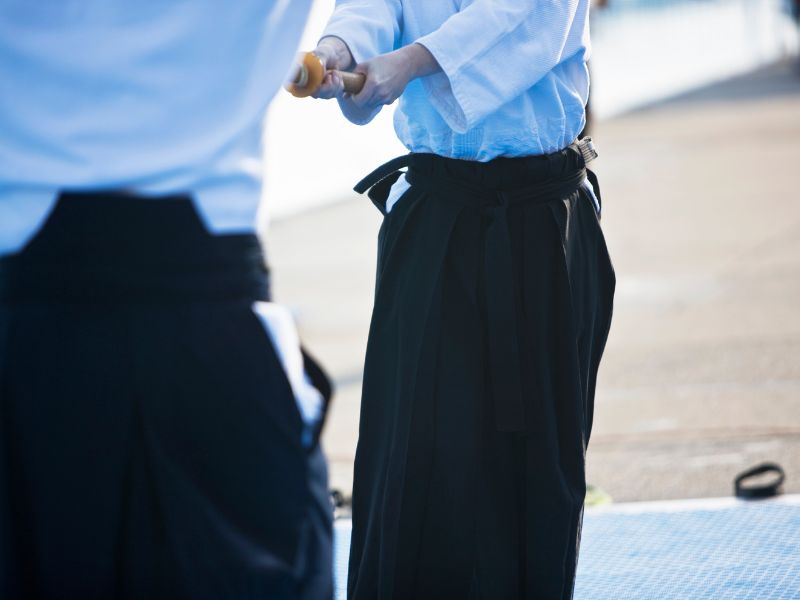
A typical Aikido practice session usually starts with a bow. This is a sign of respect for the dojo, the other students, and the instructor. The etiquette of aikido extends beyond just the bow, though. One must always be respectful, appreciative, and protective of all beings.
This attitude must be carried throughout the entire practice session.
Physical strain, whether during conditioning or in sparring against others, is part and parcel of Aikido. As such, practitioners need to maintain good manners and a positive attitude whenever they're in aikido class.
Aikido teaches you how to handle violence, but it still ultimately strives for peace, so never let your ego get in the way during your training.
Also remember that non-resistance is an essential element of proper aikido technique execution. Intercepting, deflecting, and redirecting an attack utilize the momentum and inertia of the attack.
Note that non-resistance does not mean being passively overpowered by the attack. But if you can avoid physical conflict, then you absolutely should.
It is also always important to maintain good posture and a relaxed body. Good posture includes maintaining your balance and keeping your center of gravity low. This helps you to be more aware of your surroundings and to respond more effectively to any situation.
Maintaining a relaxed body allows you to move more freely and makes it less likely that you will be thrown off balance by an attacker.
Similarly, be sure to focus on your breathing during aikido practice. This helps to calm and focus the mind, allowing for better decision making and execution of techniques.
Next, warm-up exercises are often done, including stretches and rolling or breakfalls (ukemi). These help to prepare the body for physical activity and prevent injury.
Following warm-ups, the instructor will lead the class through various aikido techniques and movements. These often involve practicing with a partner, called uke-nage (uke being the attacker, nage being the defender).
Practice with a spirit of cooperation, not necessarily competition. The goal is to mutually improve each other's technique and understanding of aikido principles, not to overpower or dominate the other person.
The practice session may also include weapons training, using a wooden sword (bokken) and wooden staff (jo). Weapons techniques often involve similar principles to those practiced with empty-handed techniques, but provide another layer of complexity and challenge.
What A Typical Ninjutsu Training Session Looks Like
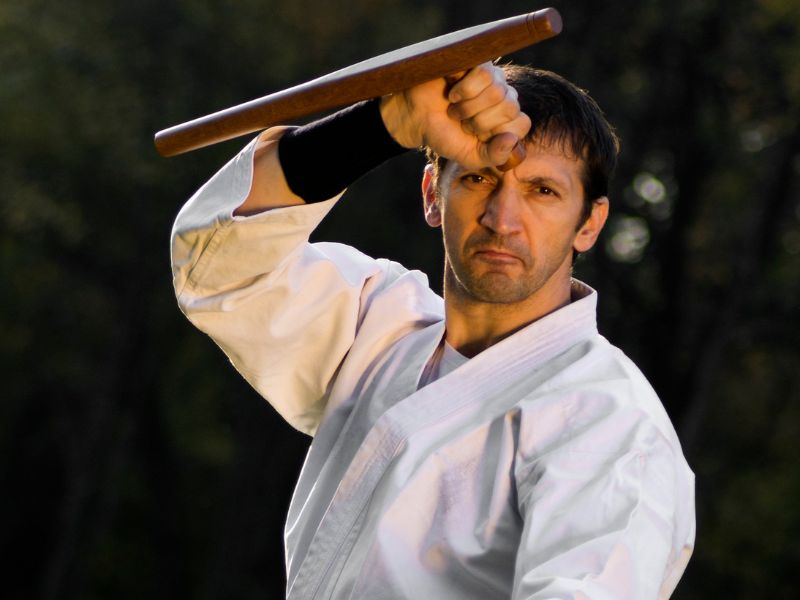
At your typical Ninjutsu beginner class, you may start with warm-up exercises and stretches. Then, the instructor may demonstrate and guide you through various techniques, such as taijutsu strikes or koppo pressure point attacks.
You may also practice stealth techniques like shinobi iri, as well as enhance your physical fitness and agility. As you learn and refine your skills, you may also begin training with traditional ninja weapons like swords or naginatas.
If the last few sections have been a bit full-on or a bit too technical, you will like this next section! Why? Because who doesn't love a good martial arts flick? Both Aikido and Ninjutsu have been featured in a number of films and TV shows, so if you want to learn more about them, then entertain yourself with the following 👊
Aikido Movies

These are some of the top movies and shows with Aikido in them:
- The Blind Swordsman: Zatoichi (2003)
- The Last Samurai (2003)
- Kill Bill: Vol. 1 (2003) and Kill Bill: Vol. 2 (2004)
- Street Fighter (1994)
- Ong-Bak: The Thai Warrior (2003)
- The Challenge (1982) TV series
Aikido can also be seen in popular shows such as:
- Daredevil (2015) TV series
- Arrow (2012) TV series
- Alias (2001-2006) TV series
- Chuck (2007-2012) TV series
- Xena: Warrior Princess (1995-2001) TV series
Some movies that have Ninjutsu in them that you may not even have noticed...
- The Last Samurai (2003)
- Ninja Assassin (2009)
- The Wolverine (2013)
- Teenage Mutant Ninja Turtles (2014)
- Kung Fu Panda 3 (2016)
So next time you're watching a movie, keep an eye out for Ninjutsu techniques!
Conclusion: Aikido Vs. Ninjutsu
I hope you now have a deeper understanding of Aikido and Ninjutsu. In all truth, it is not about which discipline is "better" as they each have their pros and cons.
If you do plan on starting classes for either, please check out my other related posts, as I have tried my best to answer all the FAQs related to the art.
Feel free to share this post and any graphics you like, and of course, if you have any questions or thoughts, drop them below or shoot me an email, and I will be happy to assist 🙂
[author-box-jpx-fitness]
